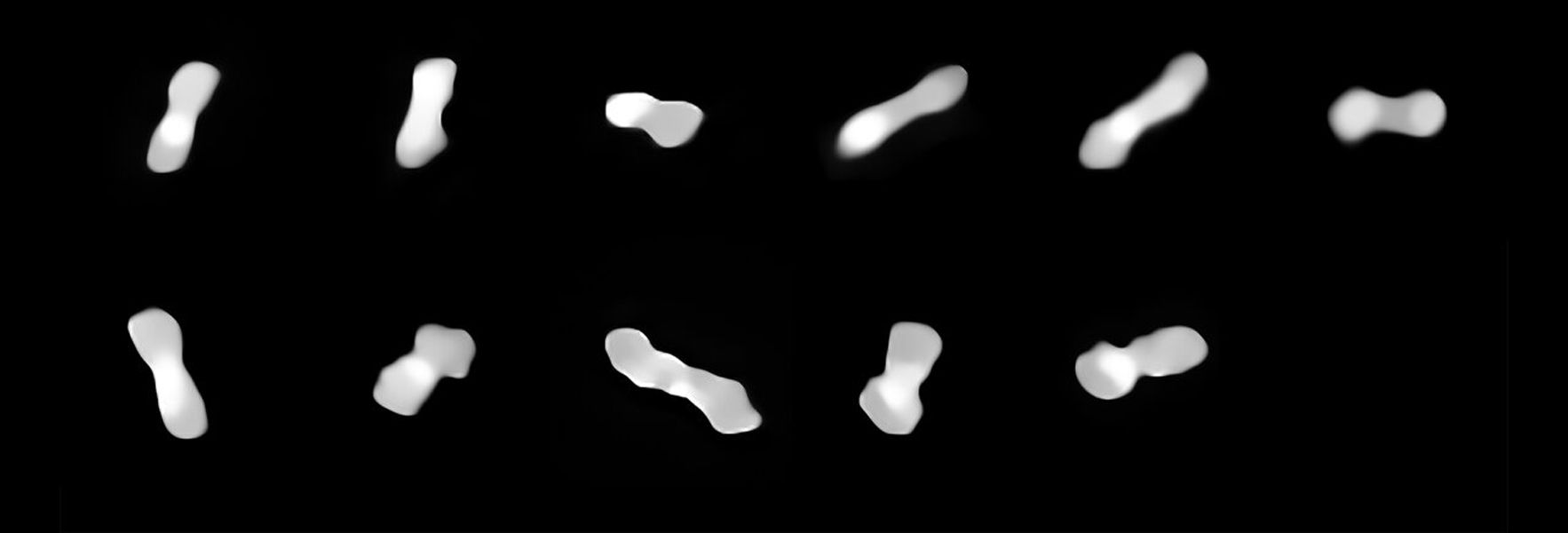
In a new paper published in Astronomy and Astrophysics, the European Southern Observatory (ESO) released the sharpest and most detailed images of the asteroid Kleopatra, sometimes called the “dog-bone asteroid.” Kleopatra orbits the sun in the Asteroid Belt between Mars and Jupiter. An international team of researchers, including Franck Marchis of the SETI Institute, used a series of images of Kleopatra taken between 2017 and 2019 to view it from different angles and create a 3D model. By constraining the asteroid's shape and volume, they determined the length of the asteroid is approximately 270 kilometers, composed of two components joined by a bridge of material. This new understanding provides clues about the origins of the asteroid and its two moons.
“Kleopatra is truly a unique body in our Solar System,” said Franck Marchis, an astronomer at the SETI Institute in Mountain View, USA and at the Laboratoire d'Astrophysique de Marseille in France, who led one of the two studies on the asteroid published today in Astronomy & Astrophysics. “Science makes a lot of progress thanks to the study of weird outliers. I think Kleopatra is one of those.” In 2008, Marchis and his team discovered two moons in orbit around Kleopatra, AlexHelios and CleoSelene.
Combining the team’s findings with those of a second study published in Astronomy and Astrophysics led by Miroslav Brož of Charles University in Prague, Czech Republic, astronomers calculated new values for Kleopatra’s volume and mass which turned out to be lower than previously thought. The result suggests it has a porous structure and was likely formed when material reaccumulated following a significant impact. It's possible that the moons formed from pebbles lifted off the asteroid's surface.
To learn more, read the full ESO press release here. The new papers in Astronomy and Astrophysics are published here:
Kleopatra, a low density critically rotating M-type asteroid: https://www.aanda.org/component/article?access=doi&doi=10.1051/0004-6361/202140874
An advanced multipole model for (216) Kleopatra triple system: https://www.aanda.org/component/article?access=doi&doi=10.1051/0004-6361/202140901





